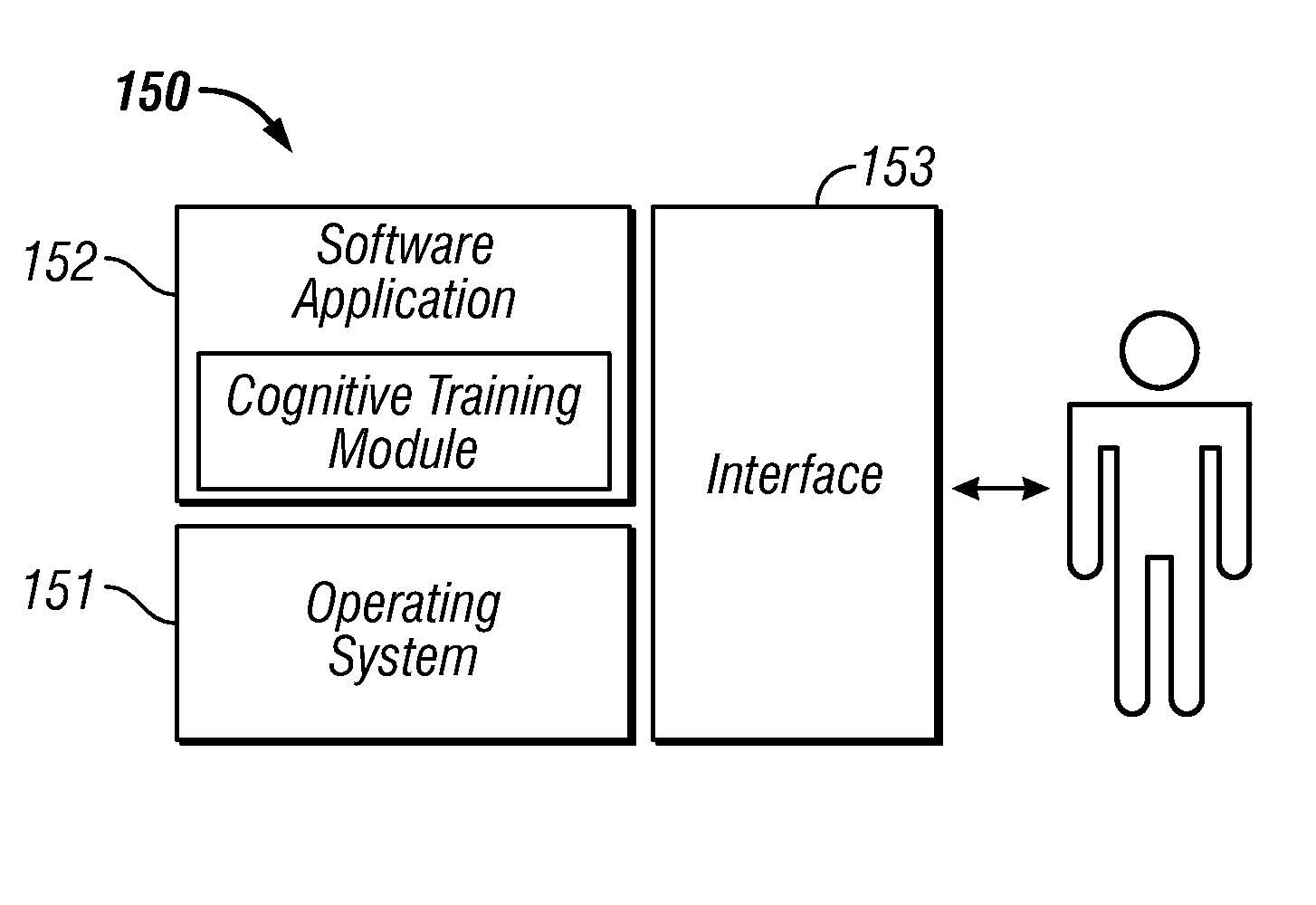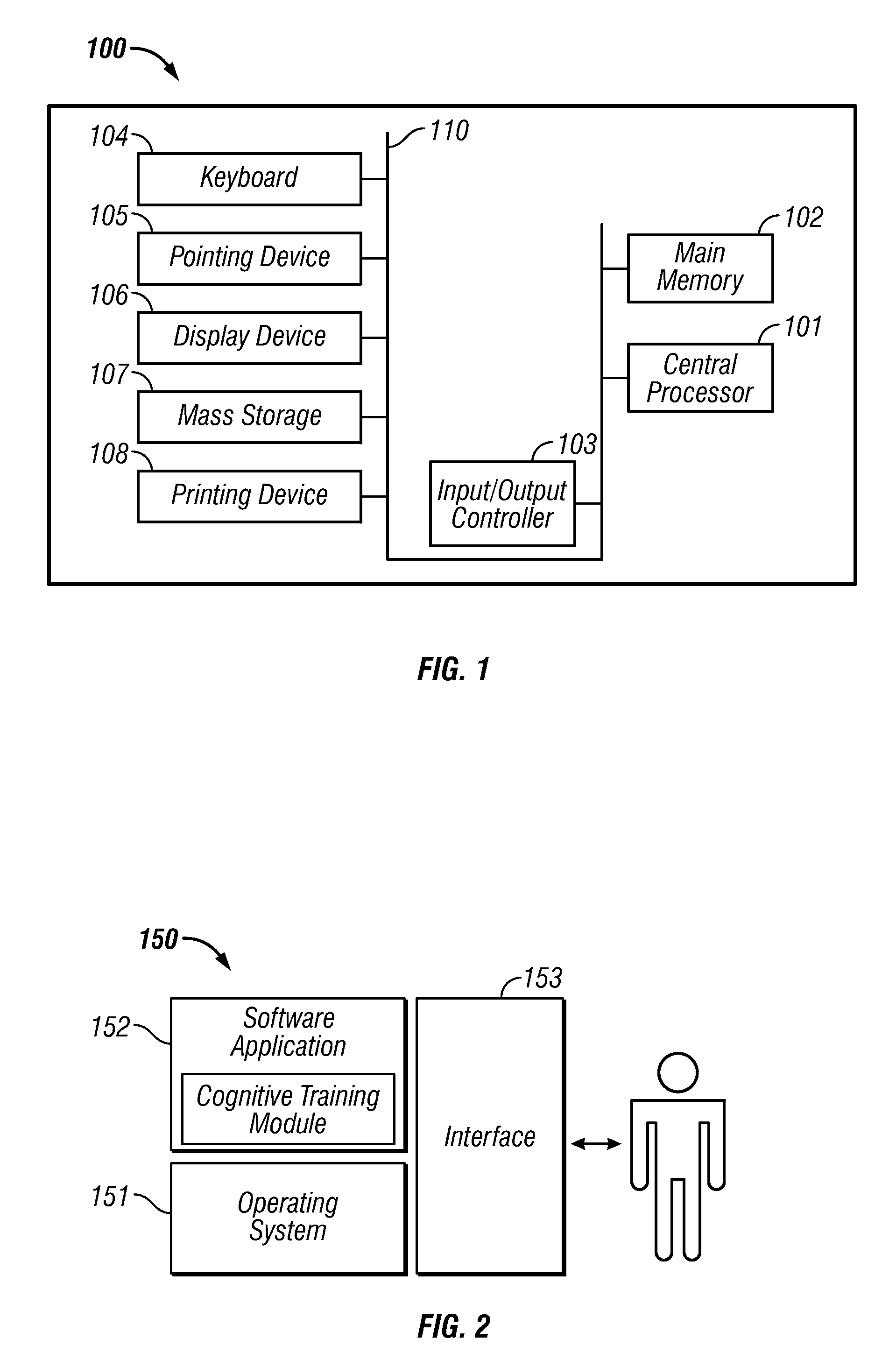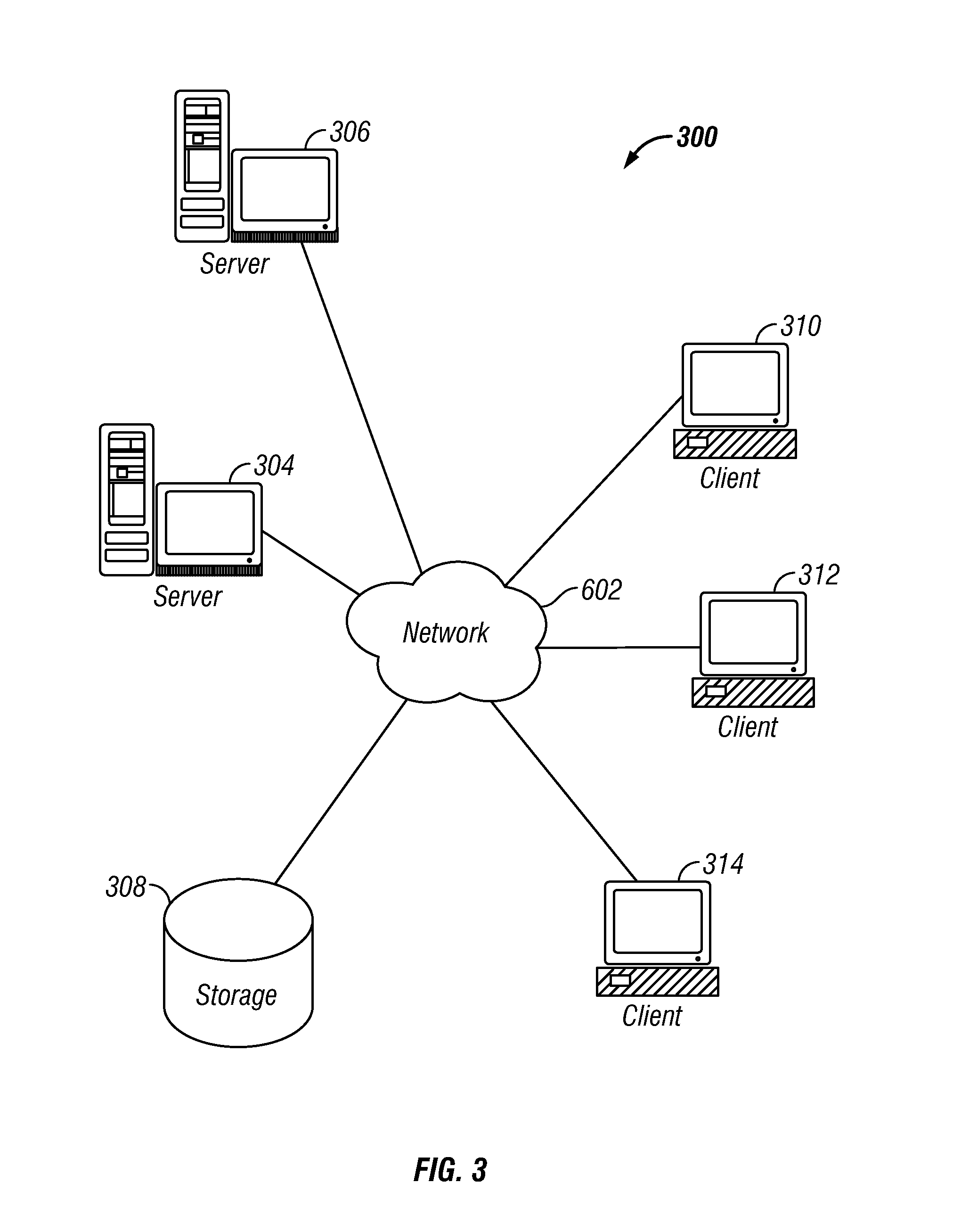Training system and method based on cognitive models
a training system and model technology, applied in the field of cognitive information processing and modeling, can solve the problems of poor decision, inaccurate and untimely action responses, prior art training methodologies that do not focus on improving functional efficiency, etc., to improve the functional efficiency improve the functional efficiency of information processing stages associated, and measure the functional efficiency of cognitive information processing stages.
- Summary
- Abstract
- Description
- Claims
- Application Information
AI Technical Summary
Benefits of technology
Problems solved by technology
Method used
Image
Examples
Embodiment Construction
[0021]The particular values and configurations discussed in these non-limiting examples can be varied and are cited merely to illustrate at least one embodiment and are not intended to limit the scope thereof.
[0022]The disclosed embodiments can be utilized to automatically provide real-time training, performance evaluation, feedback, and dynamic curriculum adjustment in association with a complex dynamic environment such as, for example, battlefield operation, emergency management, process plant control, firefighting, and so forth. The approach described herein can evaluate and provide feedback to improve the functional efficiency of various stages of information processing (e.g., information acquisition, information analysis and decision making, and action selection) in human cognition. The following discussion is intended to provide a brief, general description of suitable computing environments in which the system and method may be implemented. Although not required, the disclose...
PUM
 Login to View More
Login to View More Abstract
Description
Claims
Application Information
 Login to View More
Login to View More - R&D
- Intellectual Property
- Life Sciences
- Materials
- Tech Scout
- Unparalleled Data Quality
- Higher Quality Content
- 60% Fewer Hallucinations
Browse by: Latest US Patents, China's latest patents, Technical Efficacy Thesaurus, Application Domain, Technology Topic, Popular Technical Reports.
© 2025 PatSnap. All rights reserved.Legal|Privacy policy|Modern Slavery Act Transparency Statement|Sitemap|About US| Contact US: help@patsnap.com



